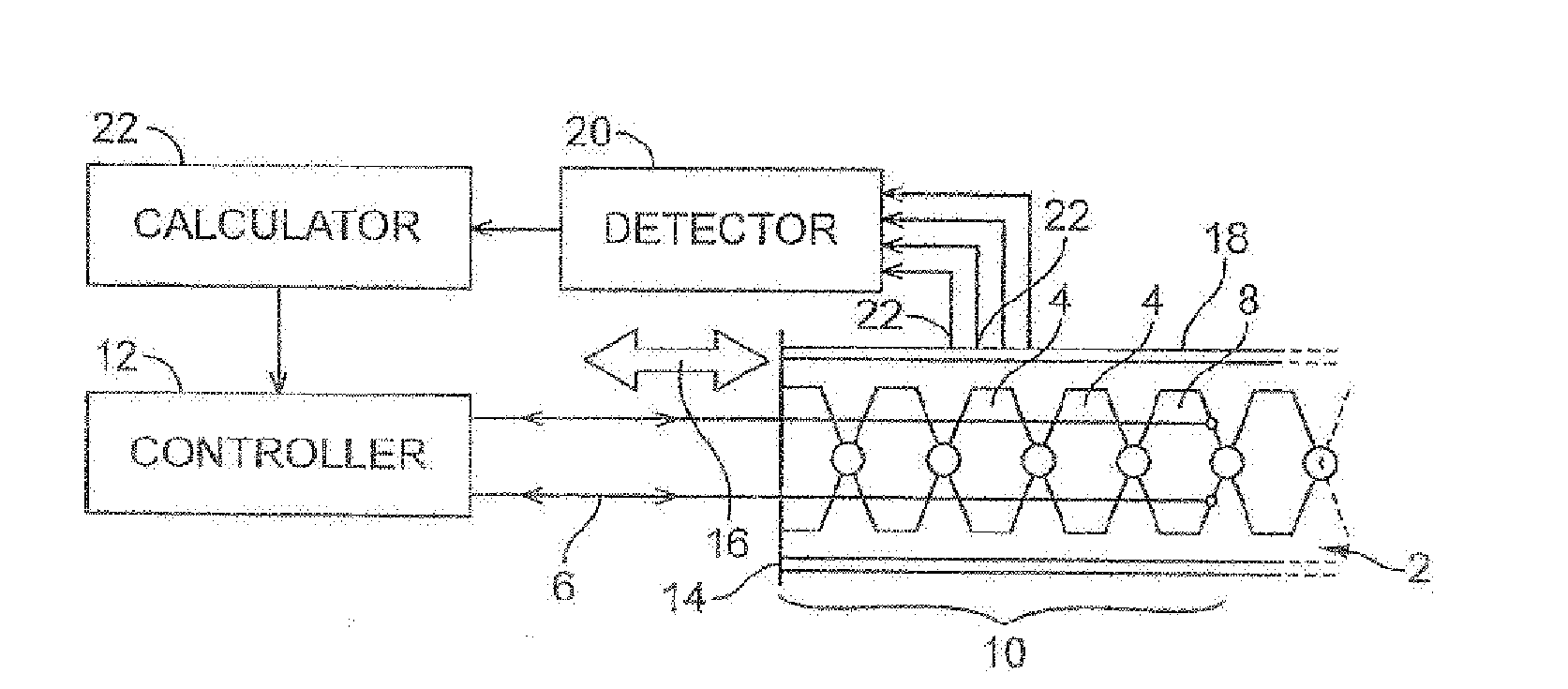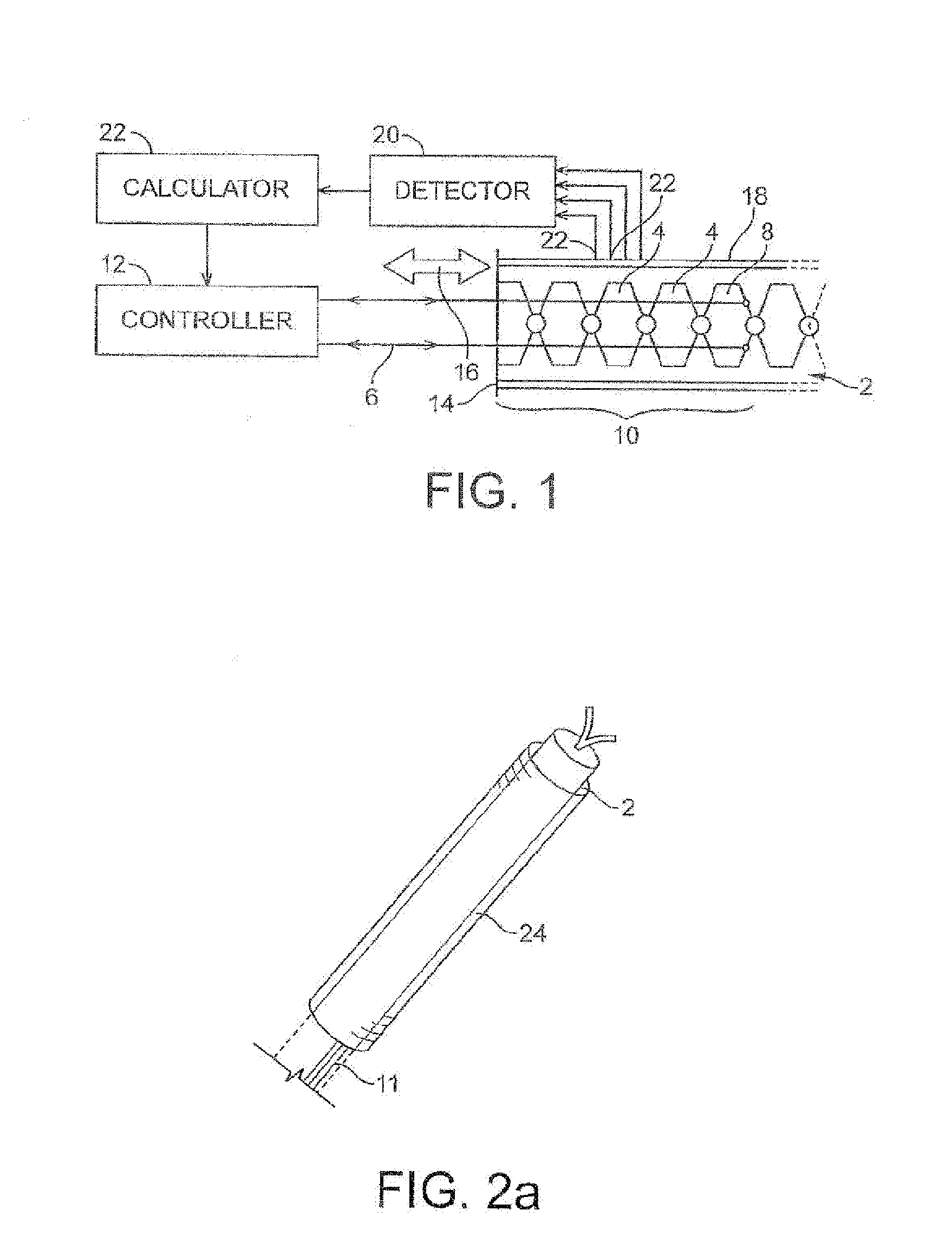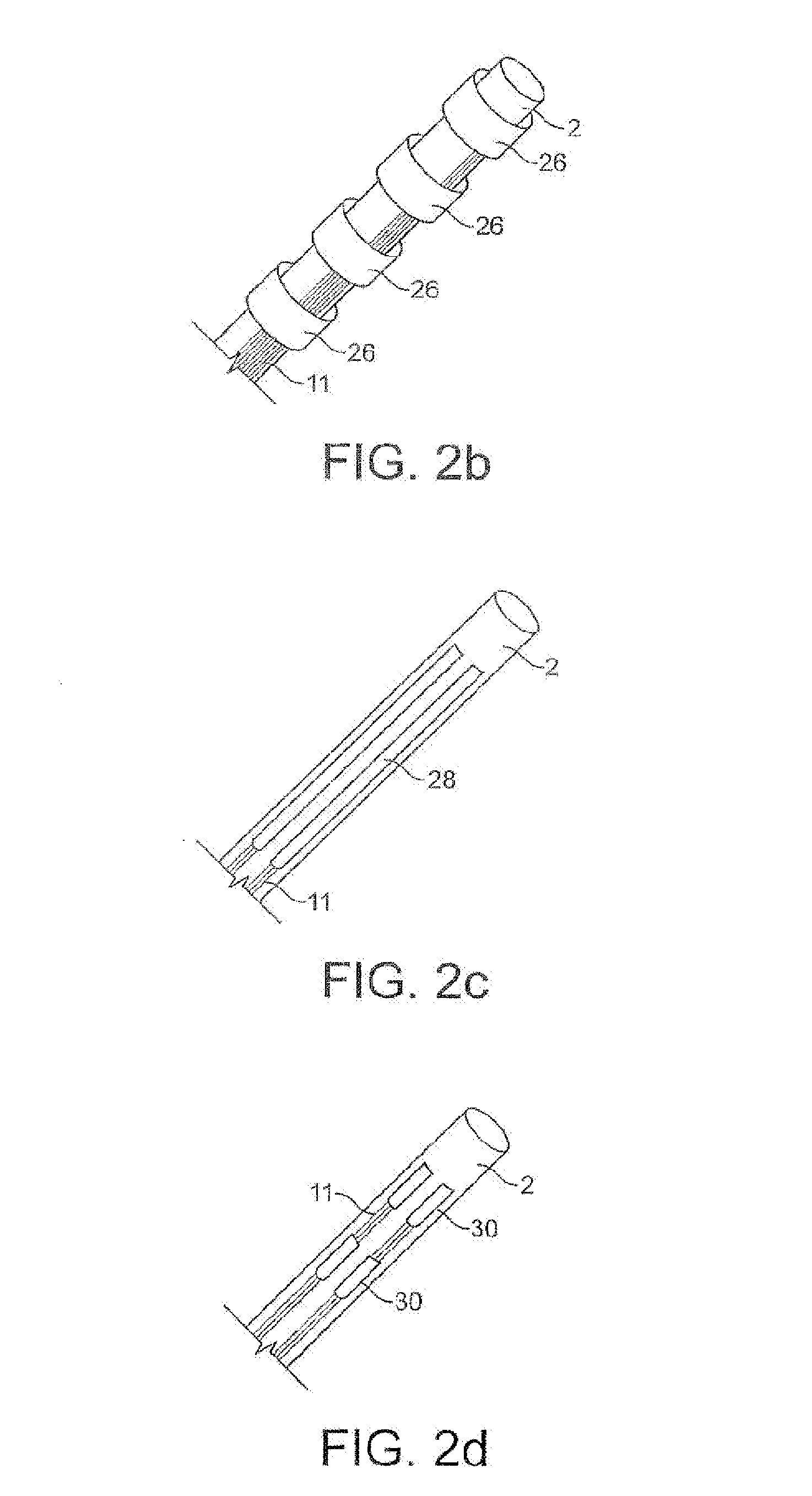Robotic Arms
- Summary
- Abstract
- Description
- Claims
- Application Information
AI Technical Summary
Benefits of technology
Problems solved by technology
Method used
Image
Examples
Embodiment Construction
[0050]Referring to FIG. 1, a robotic arm 2 comprises a plurality of articulated links 4. The position of the arm is controlled using controller 6 attached to a link 8 at the end of each segment 10. The control wires 6 are wound in or out by the controller 12 to change the shape of arm. The arm is mounted on the base plate 14 and is moveable on an introduction axis 16 so as to be able to advance or retract as the shape of the arm changes, such that the arm may follow a path in tip following snake-like manner.
[0051]The arm 2 has a tubular cover 18 which comprises a “sensorised” skin. The skin 18 may for example be touch sensitive or heat sensitive. A detector 20 measures the parameter sensed by the skin 18 at a plurality of sensor locations 22. A calculator 22 uses these measurements to calculate a modified shape of the arm 2. The information concerning the required shape is sent to the controller 12 to move the arm.
[0052]FIGS. 2A to 2D show various embodiments of the sensorised skin....
PUM
 Login to View More
Login to View More Abstract
Description
Claims
Application Information
 Login to View More
Login to View More - R&D
- Intellectual Property
- Life Sciences
- Materials
- Tech Scout
- Unparalleled Data Quality
- Higher Quality Content
- 60% Fewer Hallucinations
Browse by: Latest US Patents, China's latest patents, Technical Efficacy Thesaurus, Application Domain, Technology Topic, Popular Technical Reports.
© 2025 PatSnap. All rights reserved.Legal|Privacy policy|Modern Slavery Act Transparency Statement|Sitemap|About US| Contact US: help@patsnap.com



